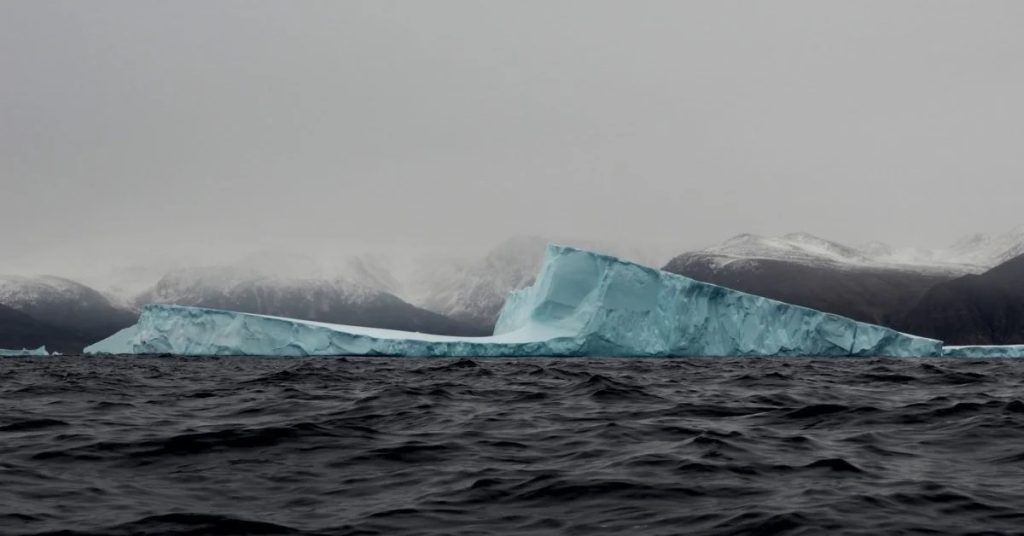Madrid, 1 (European Press)
In the Arctic, it will end up receiving more rain than snow, and that transition will occur decades earlier than expected, according to a new study led by the University of Manitoba (UM).
The latest model projections, published by an international team of researchers led by UM in Nature Communications, show a sharp increase in the rate and range of precipitation expected to fall in the Arctic, and that most of these future events will be rain. This change is caused by rapid warming, sea ice loss, and arctic heat transfer in the Arctic.
“There are huge ramifications of these changes, which we observed in the paper, such as decreased snow cover, increased melting of permafrost, more precipitation events on ice, and increased flood events due to increased river drainage, all of which have implications for lead researcher Michael McChrystal, M.D. Post-doctoral at the UM Center for Earth Observation Sciences in “Wildlife Collections and Human Livelihoods.”
This transition to a rain-dominated era in the Arctic is expected to begin at different times depending on the season and region. In the fall, for example, these new models predict that the change will happen between 2050 and 2080, while older models predicted that this will happen between 2070 and 2090. In what might be considered an omen, as these researchers were preparing a report in August of this year, they fell Rain for the first time in recorded history at the highest point of the Greenland ice sheet.
“The fact that it’s raining on top of Greenland right now, and that we might have more rain in the future, is a bit of a surprise to me,” McChrystal says. “And when we talk about this happening in the year 2100, it seems like a long time, but not more than 80 years. This is the next generation. And if we continue on the path that we are on, a lot of problems could happen faster than we expect.”
The paper warns, “New climate models reveal faster and larger increases in Arctic precipitation than previously expected,” that reduced snow cover will further exacerbate Arctic and global warming through feedbacks from albedo, and increased CO2 fluxes in Winter, methane release from the soil, thawing permafrost.
The change in rainfall will also affect soil moisture and groundwater, the underground fungal networks that support all weather plants. And as co-author Bruce Forbes of the University of Lapland’s Arctic Center points out, more snow precipitation events could trigger catastrophic famine events for wild populations of caribou, reindeer, and musk ox — the thick scales of ice that form when the air again, Refrigerants are impenetrable, which prevents animals from accessing the feed. But arctic migratory bird populations are expected to do well in these warmer, wetter conditions.
“The problem we have today is that the Arctic is changing so rapidly that Arctic wildlife may not be able to adapt,” said Mark Serris, co-author of the study and director of the National Snow and Ice Data Center. “It is not only the problem of reindeer, ibex and musk ox, but also of the peoples of the north who depend on them.”
The research team, which includes members from University College London, University of Colorado Boulder, University of Lapland and University of Exeter, notes that if we can stay below 1.5°C of global warming, some of these expected changes (namely, the transition to precipitation that dominates may not occur) It does rain in some areas of the Arctic.But if we continue on the current path, which in light of current global policies means we can reach a global warming of 3°C by the end of the century, this shift is likely to occur.
Co-author James Screen, Professor in the Department of Mathematics and the World Systems Institute at the University of Exeter says.
What this shift in precipitation means for sea ice, which is the dominant natural feature of the Arctic, is unknown. In short, more rain means more fresh water on the ocean surface, which may help sea ice growth, but more rain correlates with more heat, which reduces sea ice growth.
“People might say, ‘Well, what does that have to do with me? “Well, this is going to affect you, and in fact, it’s affecting you now,” McChrystal says. “For me, I think what people need to understand is that we live in a global society where everything is interconnected, and that’s true of climate. We have a global climate. So what happens in one area will affect what happens in the rest of the world.”

“Social media evangelist. Student. Reader. Troublemaker. Typical introvert.”




:max_bytes(150000):strip_icc()/TOUTQuiqueUsales-d41036a5131a4c4187c7b8e363c2018a.jpeg)


More Stories
Japanese ancestral ritual that is an effective and quick cleaning method: in 15 minutes organize your home and help emotional well-being
The City of Arts and Sciences of Valencia presents the first public exhibition of Pablo Achugarry in Spain
The Aragon Institute of Health Sciences will have a health data office